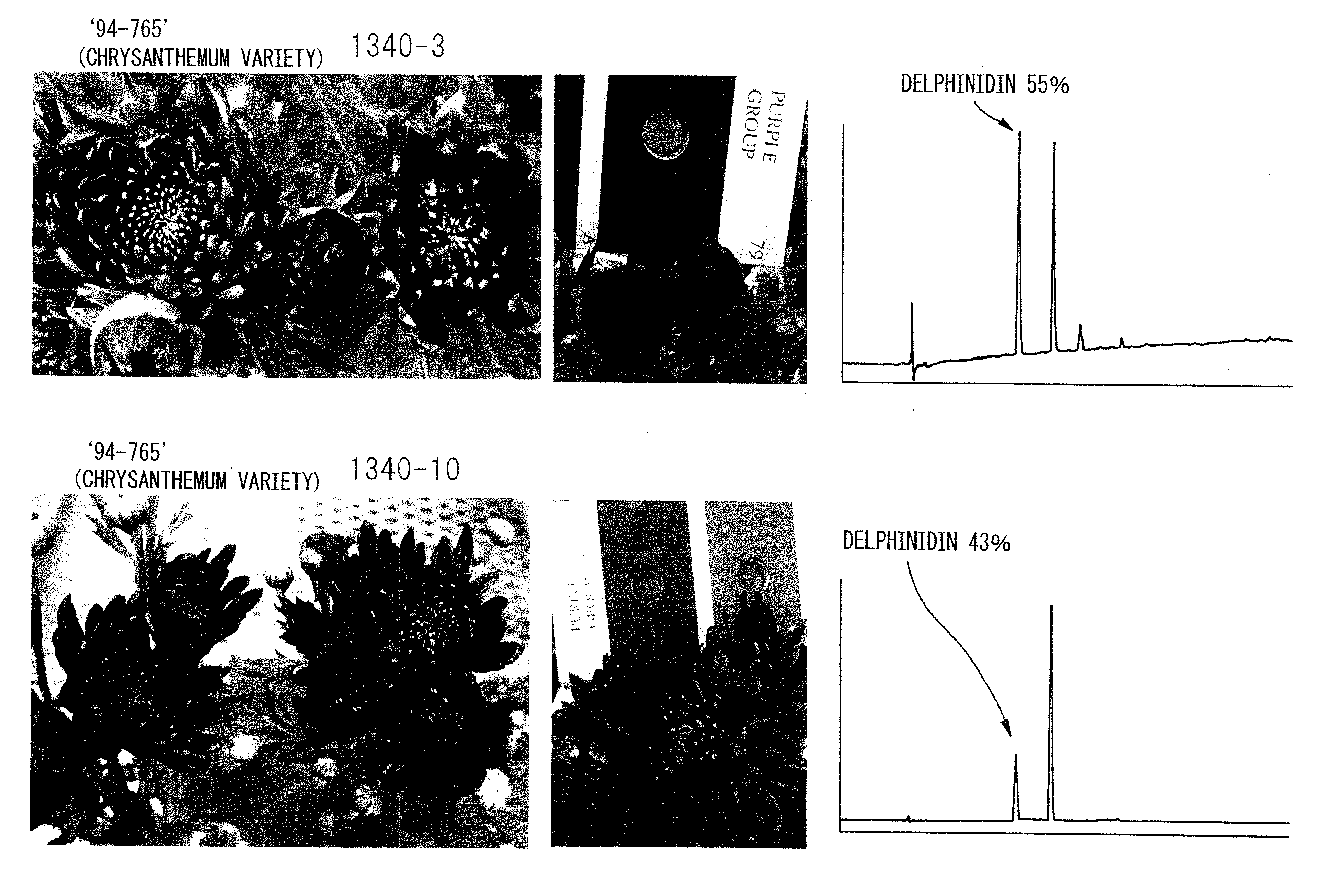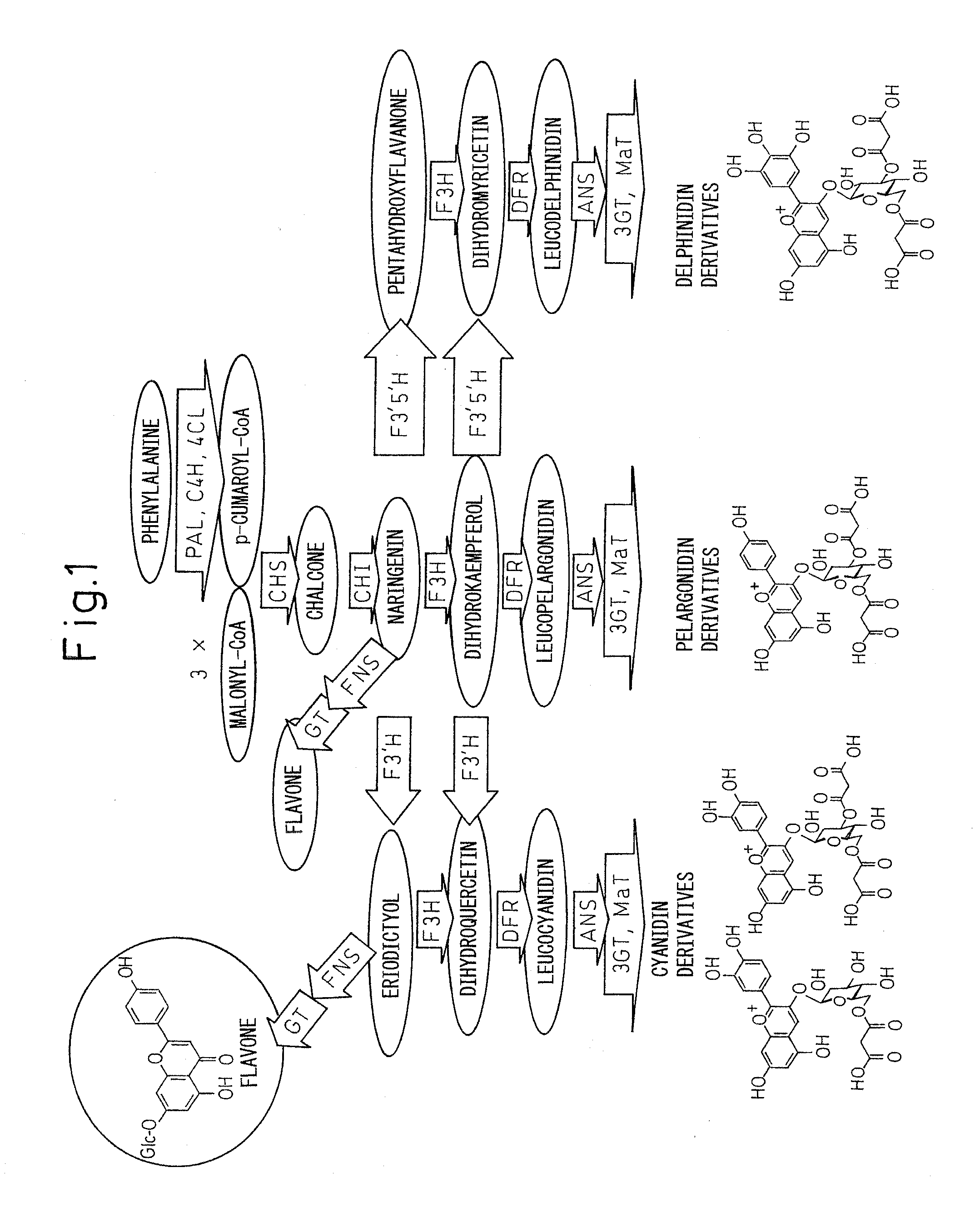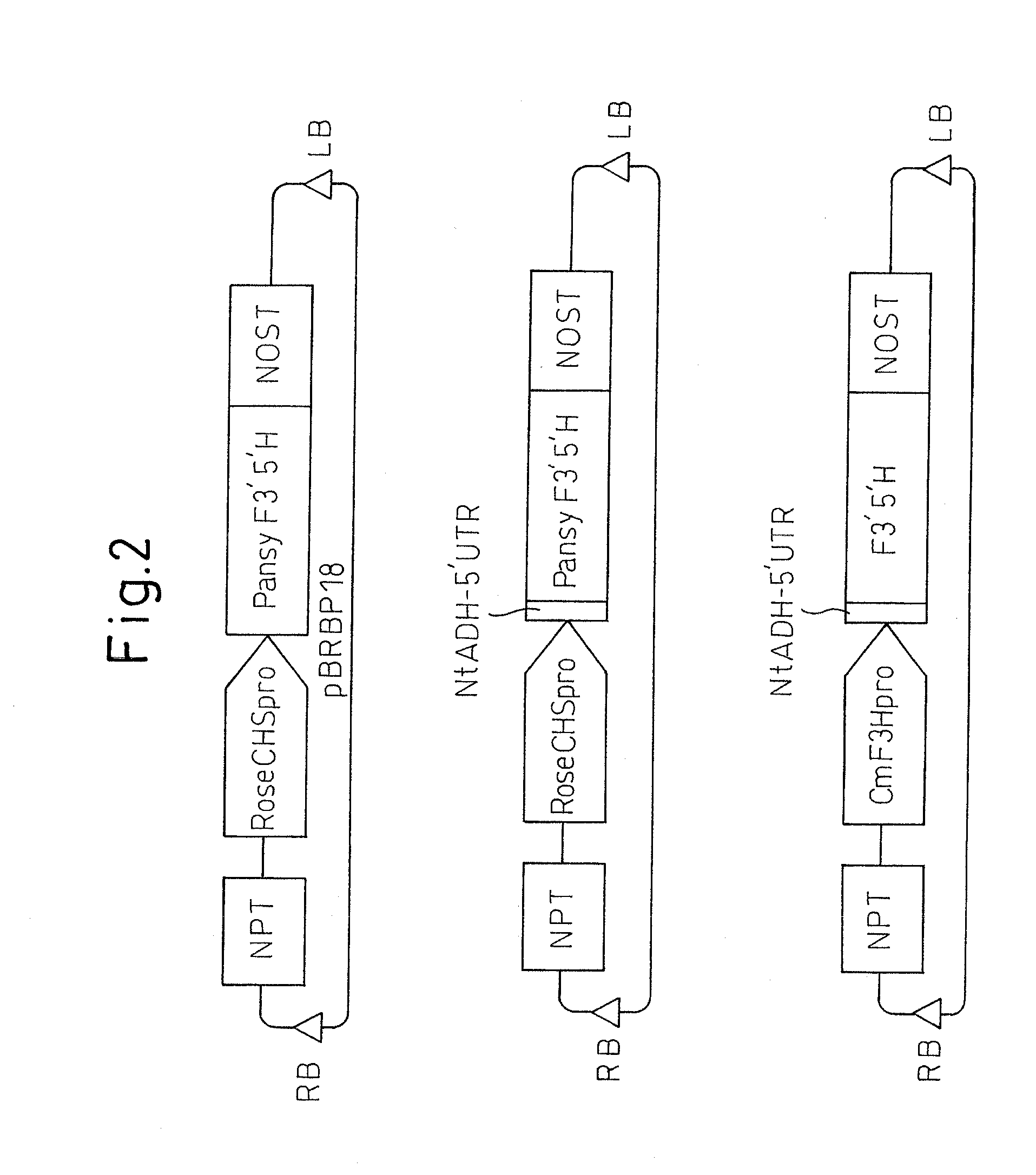Method for production of chrysanthemum plant having delphinidin-containing petals
a technology of chrysanthemum and delphinidin, which is applied in the field of chrysanthemum plant delphinidin-containing petals, can solve the problems of difficult to predict the function of such promoters, and the lack of species capable of producing flowers of all colors,
- Summary
- Abstract
- Description
- Claims
- Application Information
AI Technical Summary
Benefits of technology
Problems solved by technology
Method used
Image
Examples
reference example 1
Expression of F3′5′H Gene by Tobacco EF1α Promoter
[0067]pBIEF1α described in Patent Document 6 was digested with restrictases HindIII and BamHI to obtain a roughly 1.2 kb DNA fragment containing a promoter sequence of tobacco EF1α. This DNA fragment was inserted into the 5′-side of iris DFR cDNA of pSPB909 described in Patent Document 4 to obtain a plasmid pSLF339. A plasmid pSLF340 was similarly constructed in which petunia DFR cDNA (described in International Publication WO 96 / 36716) was inserted instead of iris DFR cDNA.
[0068]A plasmid obtained by inserting a BP40 fragment of pansy F3′5′H gene, excised by partial digestion with BamHI and XhoI from pCGP1961 described in Patent Document 4, into BamHI and Sail sites of pSPB176 (described in Plant Science, 163, 253-263, 2002) was designated pSPB575. The promoter portion of this plasmid was replaced with the promoter of the aforementioned tobacco EF1α using HindIII and BamHI to obtain pSLF338. A fragment containing iris DFR cDNA was i...
reference example 2
Chrysanthemum Transfected with Cineraria F3′5′H Gene Promoter
[0072]RNA was extracted based on an established method from the petals of a bud of blue Cineraria Senetti (Suntory Flowers Ltd.). A cDNA library was produced using the ZAP-cDNA® Library Construction Kit (Stratagene Corp., Catalog No. 200450) in accordance with the method recommended by the manufacturer using poly-A+RNA prepared from this RNA. This cDNA library was then screened using butterfly pea F3′5′H cDNA (Clitoria ternatea, see Plant Biotechnology, 23, 5-11 (2006)) labeled with the DIG System (Roche Applied Science) according to the method recommended by the manufacturer. Forty eight phages indicating signal were isolated. Plasmids were obtained from these phages by in vivo excision according to the method recommended by the manufacturer (Stratagene).
[0073]The nucleotide sequences of the cDNA portions contained in these plasmids were determined, a Blast search was made of DNA databases, numerous genes were obtained th...
reference example 3
Production of Delphinidin Using Rose Chalcone Synthase Gene Promoter
[0077]A binary vector was constructed in which pansy-derived F3′5′H BP#18 gene was coupled to a rose-derived chalcone synthase promoter described in PCT International Patent Publication No. PCT / AU03 / 01111, and this binary vector was designated pBRBP18. The gene contained in this binary vector was transformed into chrysanthemum variety 94-765 as described in Reference Examples 1 and 2. When anthocyanidins in the flower petals of the transformed chrysanthemum were analyzed, although a maximum of 5.4% of delphinidin was detected with respect to all anthocyanidins, there was no change in flower color observed.
[0078]In addition, pSPB3325 (rose CHSpro::pansy #18+rose CHSp:: chrysanthemum F3′H IR) described in the ninth row from the top in Table 1 is an example of the production of delphinidin using rose chalcone synthase gene promoter, and delphinidin production in this example reached a maximum of 3.6%.
PUM
| Property | Measurement | Unit |
|---|---|---|
| temperature | aaaaa | aaaaa |
| particle diameter | aaaaa | aaaaa |
| particle diameter | aaaaa | aaaaa |
Abstract
Description
Claims
Application Information
 Login to View More
Login to View More - R&D
- Intellectual Property
- Life Sciences
- Materials
- Tech Scout
- Unparalleled Data Quality
- Higher Quality Content
- 60% Fewer Hallucinations
Browse by: Latest US Patents, China's latest patents, Technical Efficacy Thesaurus, Application Domain, Technology Topic, Popular Technical Reports.
© 2025 PatSnap. All rights reserved.Legal|Privacy policy|Modern Slavery Act Transparency Statement|Sitemap|About US| Contact US: help@patsnap.com



